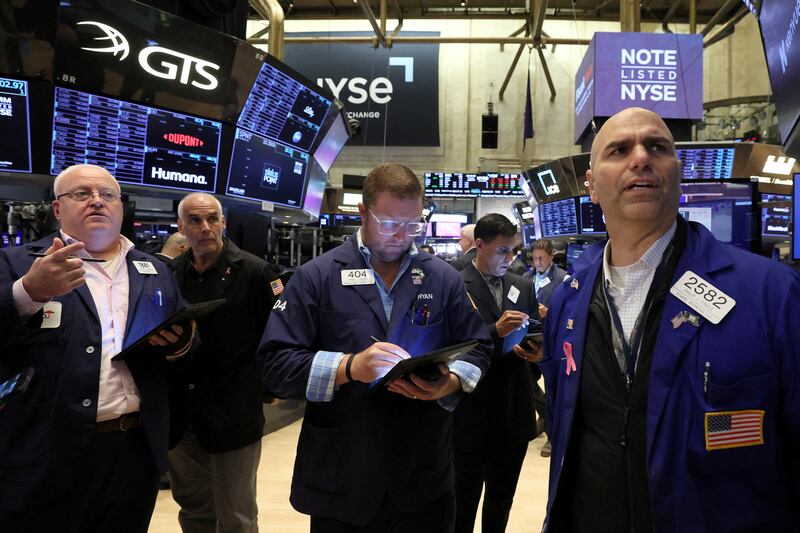Wall Street ended its second losing week in a row on Friday on a sell-off in tech stocks and ahead of next week’s Federal Reserve policy meeting.
The S&P 500 fell 0.6 per cent to drop below 5,120, while the tech-heavy Nasdaq 100 fell more than 1 per cent. The Dow Jones Industrial Average was down 0.5 per cent.
Technology stocks pulled down the market. Software maker Adobe slumped 13.7 per cent after giving investors a weak revenue forecast. Microsoft fell 2.1 per cent and Broadcom lost 2.1 per cent.
Communication services stocks also pulled the market lower. Meta Platforms fell 1.6 per cent and Google parent Alphabet fell 1.3 per cent.
“Uncertainty about the future of the US central bank’s policy has prompted investors to lower their expectations for a June interest rate cut,” said Rania Gule, market analyst at XS.com.
“Given that readings of both US consumer and producer price indices show a pickup in stubborn inflation, Federal Reserve policymakers will be likely to refrain from easing monetary policy during next week’s meeting.
“The next Fed meeting is scheduled for March 19 and 20, with market focus expected to be significant, potentially constraining price movements during the beginning of next week.”
The latest pullback for stocks came as investors reviewed reports showing that inflation, although cooling, remains stubborn.
A report from the University of Michigan showed that consumer sentiment fell unexpectedly in March.
Inflation remains the big concern for Wall Street amid hopes for the Federal Reserve to start cutting interest rates.
The Fed sharply raised interest rates starting in 2022 to tame inflation back to its 2 per cent target. Inflation at the consumer level was as high as 9.1 per cent in 2022.
A report on consumer prices this week showed inflation remains stubborn, ticking up to 3.2 per cent in February from 3.1 per cent in January.
Another report on prices at the wholesale level also showed inflation remains hotter than Wall Street expected.
US producer price inflation jumped to 0.6 per cent on a monthly basis in February, and to 1.6 per cent on a yearly basis.
A rally for stocks that started in October has stalled in March as investors try to determine the path ahead for inflation, the Fed and the economy.
Fed officials will give their latest forecasts for where they see interest rates heading this year on March 20.
The central bank is widely expected to hold rates steady at its policy meeting next week, but investors will be watching the central bank's economic projections, including its interest rate forecast.
Officials last released quarterly forecasts in December, anticipating three quarter-point cuts in 2024, and they’re set to release an update of those projections on March 20.
Traders are still leaning towards a rate cut in June, according to data from CME Group.
Markets are pricing in a 59.2 per cent chance for a rate cut of at least 25 basis points (bps) by the Fed in June, down from 59.5 per cent in the prior session and 73.3 per cent a week ago, according to CME's FedWatch Tool.
Lower rates would relieve pressure on the economy and financial system.
“All eyes are on next week’s Federal Open Market Committee meeting. The Fed will update its dot plot having seen a two-month jump in inflation, robust jobs data, a relatively strong gross domestic print and healthy earnings,” said Ipek Ozkardeskaya, senior analyst at Swissquote Bank.
“There is a chance that we see the median forecast show no more than two rate cuts pencilled in by the Fed members for the year – instead of three plotted at December’s dot plot. We will walk into next week’s FOMC meeting with a hawkish tilt knowing that it’s always better for the Fed not to act too early than to be forced to make a U-turn on the way.”
Meanwhile, bond yields edged higher. The yield on the 10-year Treasury rose to 4.31 per cent from 4.29 per cent late Thursday.
The yield on the two-year Treasury, which typically moves in step with interest rate expectations, rose 4.73 per cent from 4.69 per cent.
The dollar rose and was on track for its strongest week since mid-January.







